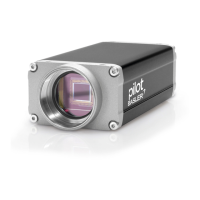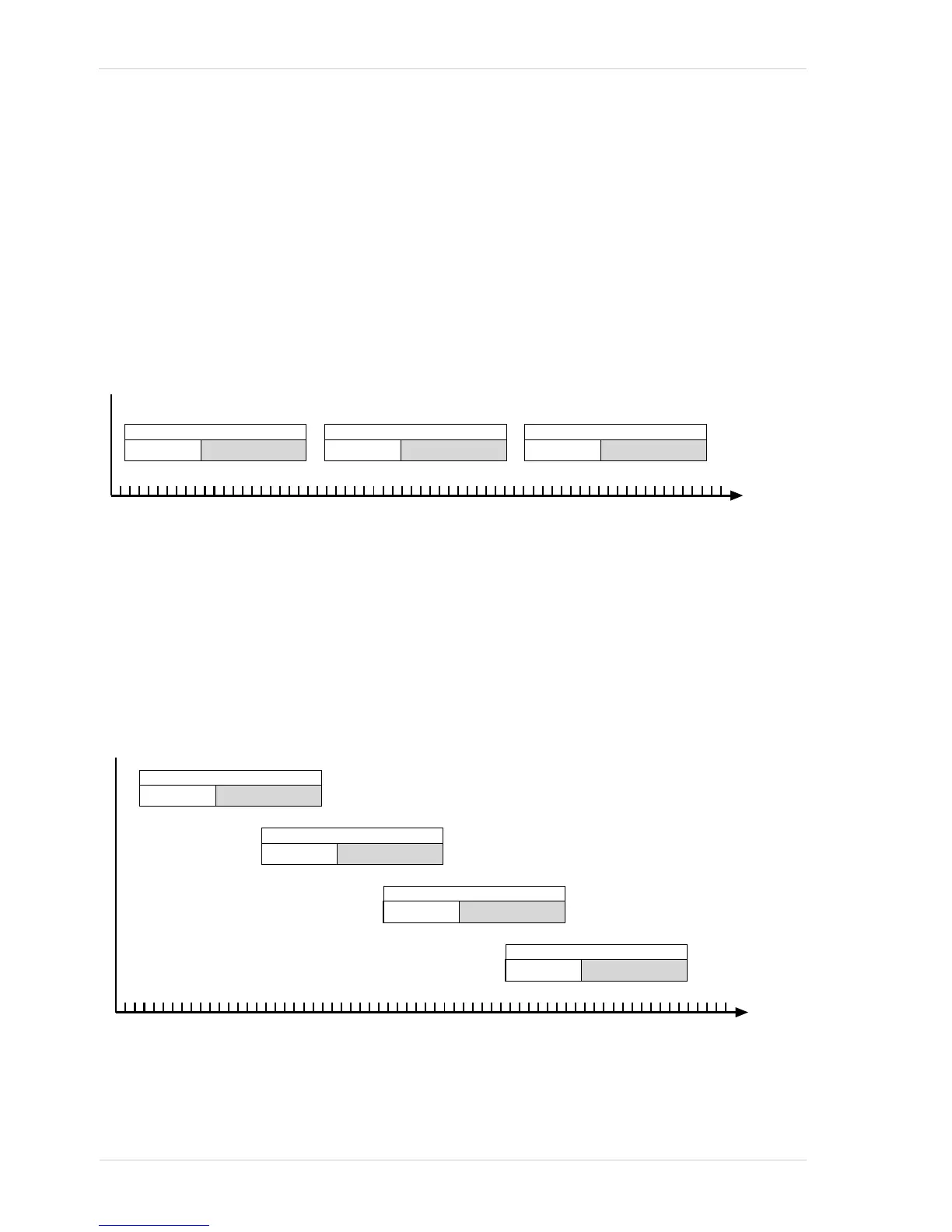Image Acquisition Control
94 Basler pilot
8.5 Overlapping Exposure and Sensor
Readout
The image acquisition process on the camera includes two distinct parts. The first part is the
exposure of the pixels in the imaging sensor. Once exposure is complete, the second part of the
process – readout of the pixel values from the sensor – takes place.
In regard to this image acquisition process, there are two common ways for the camera to operate:
with “non-overlapped” exposure and with “overlapped” exposure. In the non-overlapped mode of
operation, each time an image is acquired, the camera completes the entire exposure/readout
process before acquisition of the next image is started. This situation is illustrated in Figure 34.
Fig. 34: Non-overlapped Exposure
While operating in a non-overlapped fashion is perfectly normal and is appropriate for many
situations, it is not the most efficient way to operate the camera in terms of acquisition frame rate.
On this camera, however, it is allowable to begin exposing a new image while a previously acquired
image is being read out. This situation is illustrated in Figure 35 and is known as operating the
camera with “overlapped” exposure.
As you can see, running the camera with readout and exposure overlapped can allow higher
acquisition frame rates because the camera is performing two processes at once.
Fig. 35: Overlapped Exposure

